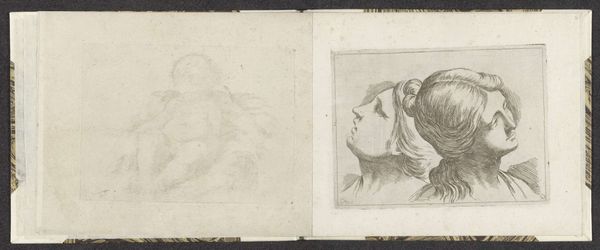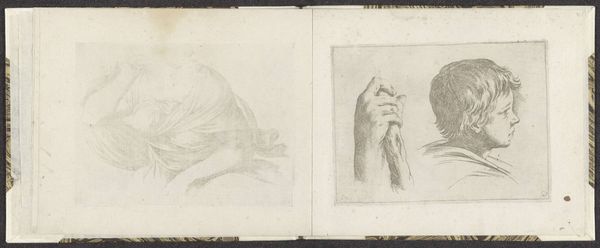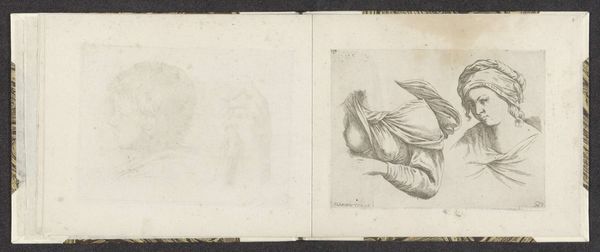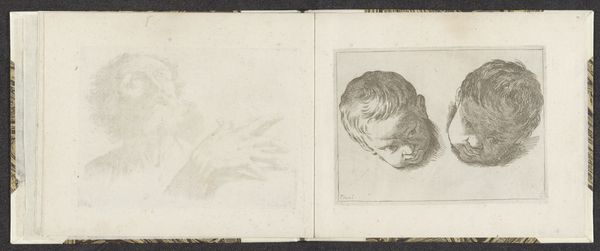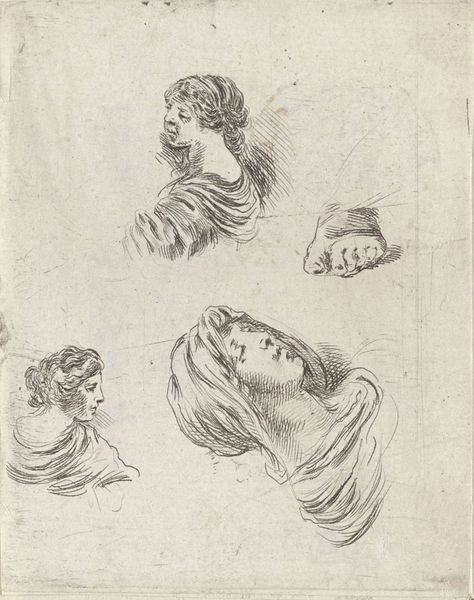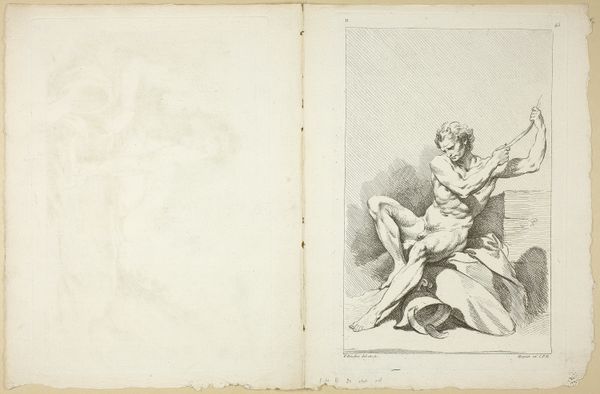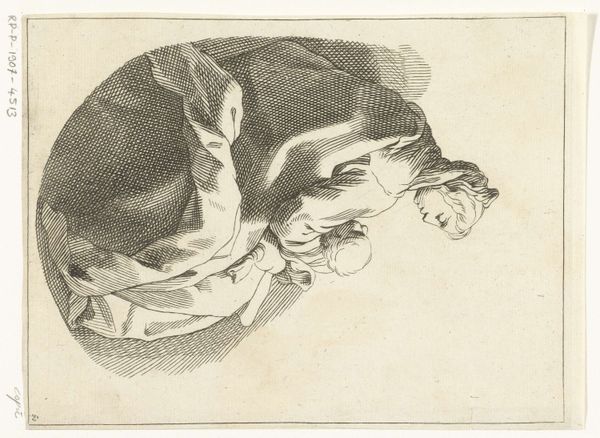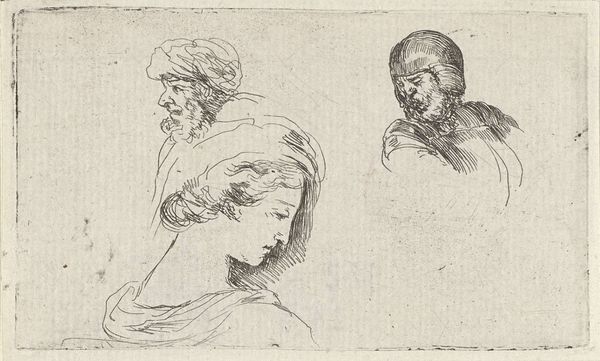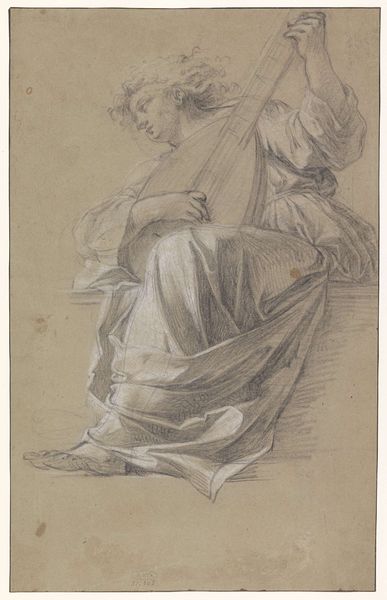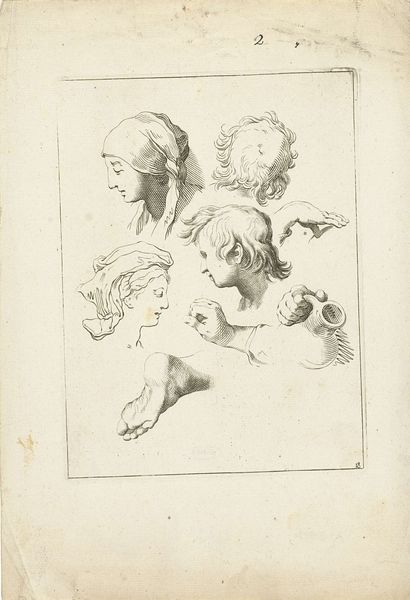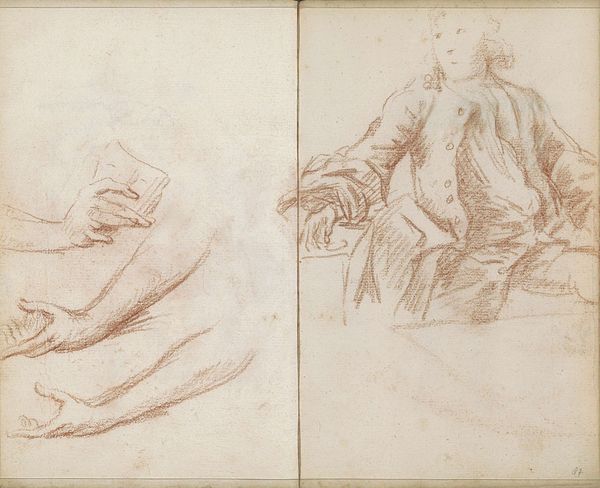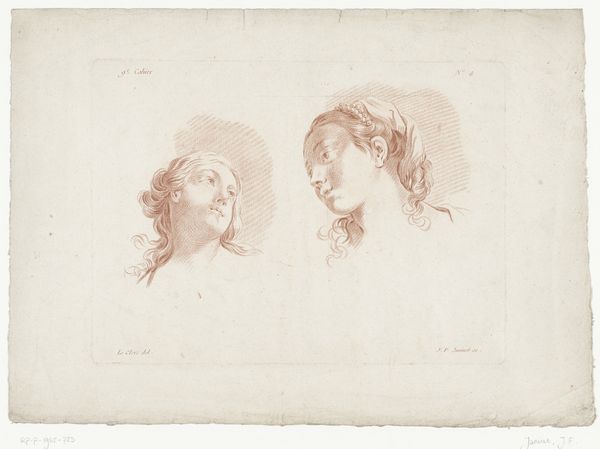
drawing, paper, ink, pencil
#
portrait
#
drawing
#
aged paper
#
toned paper
#
light pencil work
#
quirky sketch
#
baroque
#
sketch book
#
incomplete sketchy
#
paper
#
personal sketchbook
#
ink
#
pen-ink sketch
#
pencil
#
sketchbook drawing
#
academic-art
#
sketchbook art
Dimensions: height 142 mm, width 192 mm
Copyright: Rijks Museum: Open Domain
Editor: So, here we have "Bovenlichaam van een vrouw," or "Upper body of a woman," made around 1663-1666 by Giuseppe Maria Mitelli. It’s a pen and ink drawing on paper, found in a sketchbook. There’s something incredibly intimate about seeing these early sketches; I feel like I’m glimpsing into the artist's creative process. What strikes you about this work? Curator: Ah, yes. I always feel like I am seeing through the artist’s eyes. The immediate impression is of fleeting thoughts caught in ink. Think about Mitelli, in his studio, rapidly sketching studies of form, light catching on drapery… a visual note! Look closely—isn’t it remarkable how he suggests volume with just a few strokes? Almost like a secret language being written. Do you get a sense of his thought process from these pages? Editor: Absolutely! I can almost imagine him working quickly to capture the pose and light. The sketchy lines add a real sense of movement, like the figure is caught in a moment. But, I’m curious—is this typical of sketches from that era, or does Mitelli bring a unique style to the sketchbook page? Curator: That’s a sharp question. Well, academic drawings from the Baroque period often emphasize idealized forms and careful observation, sure. However, the energy of this sketch has a life beyond the strictures of formal study. Imagine his hand dancing across the paper; there’s a freedom and expressiveness here. He’s almost riffing on the form! It's that blend of study and impulse which fascinates me. Editor: That makes so much sense. The "riffing" really comes through. I came into this conversation expecting something more academic, but I now see this spontaneity really gives the artwork its special feel. Curator: Precisely. A fleeting dance between eye, mind, and hand… And that’s what makes it memorable, don’t you think?
Comments
No comments
Be the first to comment and join the conversation on the ultimate creative platform.
